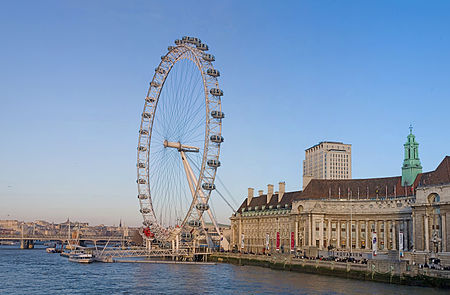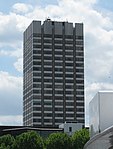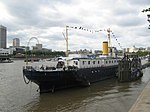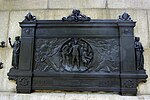South Bank

The South Bank is an entertainment and commercial district in central London, next to the River Thames opposite the City of Westminster. It forms a narrow strip of riverside land within the London Borough of Lambeth (where it adjoins Albert Embankment) and the London Borough of Southwark, (where it adjoins Bankside). As such, the South Bank may be regarded as somewhat akin to the riverside part of an area known previously as Lambeth Marsh and North Lambeth. While the South Bank is not formally defined, it is generally understood to bounded by Westminster Bridge and Blackfriars Bridge, and to be centred approximately half a mile (800 metres) south-east of Charing Cross. The name South Bank was first widely used in 1951 during the Festival of Britain. The area's long list of attractions includes the County Hall complex, the Sea Life London Aquarium, the London Dungeon, Jubilee Gardens and the London Eye, the Southbank Centre, Royal Festival Hall, National Theatre, and BFI Southbank. In addition to their official and business functions, both the County Hall and the Shell Centre have major residential components. Due to it often being waterlogged in winter, the area was slower to develop than the "North Bank" of the Thames . Throughout its history, it has twice functioned as an entertainment district, interspersed by around a hundred years of wharfs, domestic industry and manufacturing being its dominant use. Restoration began in 1917 with the construction of County Hall at Lambeth replacing the Lion Brewery. Its Coade stone symbol was retained and placed on a pedestal at Westminster Bridge and is known as the South Bank Lion. The pedestrianised embankment is The Queen's Walk, which is part of the Albert Embankment built not only for public drainage but also to raise the whole tract of land to prevent flooding.In 1951 the Festival of Britain redefined the area as a place for arts and entertainment. It now forms a significant tourist district in central London, stretching from Blackfriars Bridge in the east to Westminster Bridge in the west. A series of central London bridges connect the area to the northern bank of the Thames Golden Jubilee and Waterloo Bridge.
Excerpt from the Wikipedia article South Bank (License: CC BY-SA 3.0, Authors, Images).South Bank
Gabriel's Wharf, London Lambeth (London Borough of Lambeth)
Geographical coordinates (GPS) Address Nearby Places Show on map
Geographical coordinates (GPS)
| Latitude | Longitude |
|---|---|
| N 51.508 ° | E -0.11 ° |
Address
The Wheel
Gabriel's Wharf 16
SE1 9PP London, Lambeth (London Borough of Lambeth)
England, United Kingdom
Open on Google Maps










